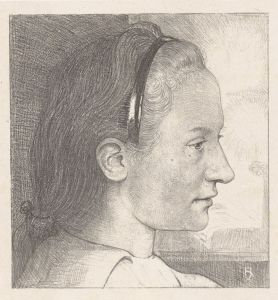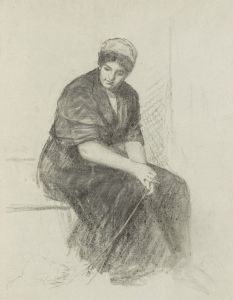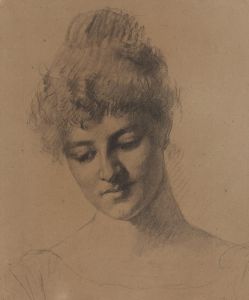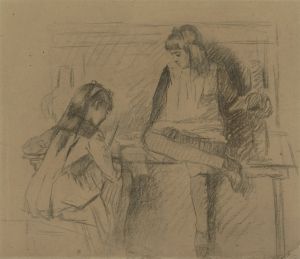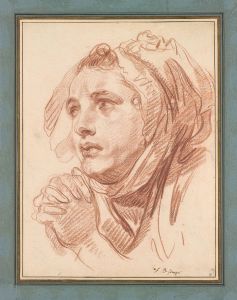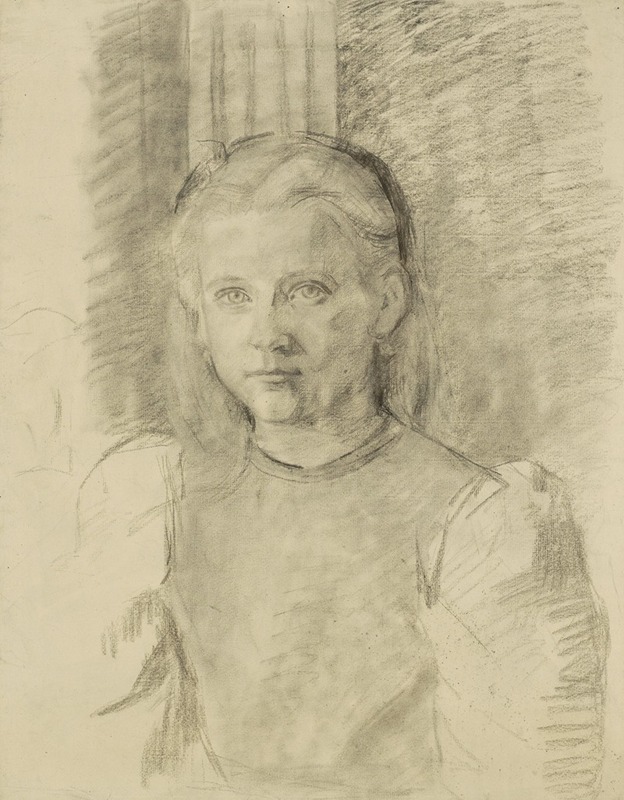
Portret van een jong meisje
A hand-painted replica of Thérèse Schwartze’s masterpiece Portret van een jong meisje, meticulously crafted by professional artists to capture the true essence of the original. Each piece is created with museum-quality canvas and rare mineral pigments, carefully painted by experienced artists with delicate brushstrokes and rich, layered colors to perfectly recreate the texture of the original artwork. Unlike machine-printed reproductions, this hand-painted version brings the painting to life, infused with the artist’s emotions and skill in every stroke. Whether for personal collection or home decoration, it instantly elevates the artistic atmosphere of any space.
"Portret van een jong meisje" (Portrait of a Young Girl) is a painting by the Dutch artist Thérèse Schwartze, who was a prominent portrait painter in the late 19th and early 20th centuries. Schwartze was born on December 20, 1851, in Amsterdam, Netherlands, and she came from a family with a strong artistic background. Her father, Johan Georg Schwartze, was also a painter and provided her initial training in art. Thérèse Schwartze further honed her skills by studying under Gabriel Max in Munich and at the Académie Julian in Paris.
The exact date of the painting "Portret van een jong meisje" is not well-documented, but it is believed to have been created during the height of Schwartze's career, which spanned from the 1870s to the early 1900s. Schwartze was known for her ability to capture the character and personality of her subjects, often portraying members of the Dutch elite and royalty.
"Portret van een jong meisje" exemplifies Schwartze's skill in rendering delicate features and the subtle play of light and shadow. The painting depicts a young girl with a serene expression, dressed in period attire. The attention to detail in the girl's clothing and the texture of her hair highlights Schwartze's technical proficiency and her keen eye for realism. The background is typically subdued, ensuring that the focus remains on the subject's face and expression.
Thérèse Schwartze's work was highly regarded during her lifetime, and she received numerous commissions from wealthy patrons. She was also awarded several honors, including being named a member of the Royal Academy of Art in Amsterdam and receiving the Order of Orange-Nassau. Her portraits were exhibited in prestigious venues across Europe, further cementing her reputation as one of the leading portrait artists of her time.
In addition to her technical skills, Schwartze was known for her ability to put her sitters at ease, which allowed her to capture more natural and intimate portrayals. This quality is evident in "Portret van een jong meisje," where the subject appears relaxed and composed, suggesting a sense of trust and comfort between the artist and the sitter.
Thérèse Schwartze's legacy continues to be celebrated in the Netherlands and beyond. Her works are part of several important collections, including the Rijksmuseum in Amsterdam and the Dordrechts Museum. "Portret van een jong meisje" remains a testament to her talent and her contribution to the art of portraiture.
Schwartze passed away on December 23, 1918, but her influence endures through her extensive body of work. Her portraits not only provide a glimpse into the fashion and aesthetics of her time but also offer a window into the personalities and lives of her subjects. "Portret van een jong meisje" is a fine example of her ability to blend technical mastery with emotional depth, making it a cherished piece in the history of Dutch art.





